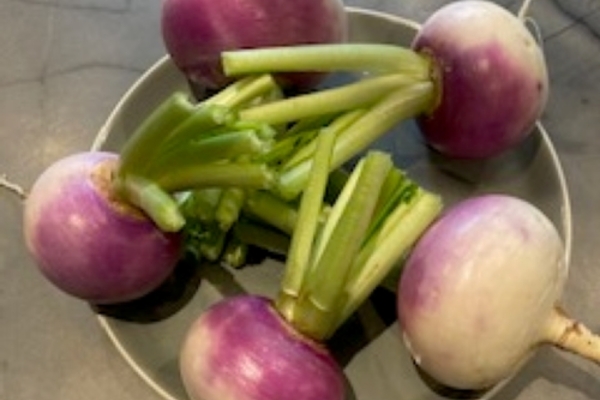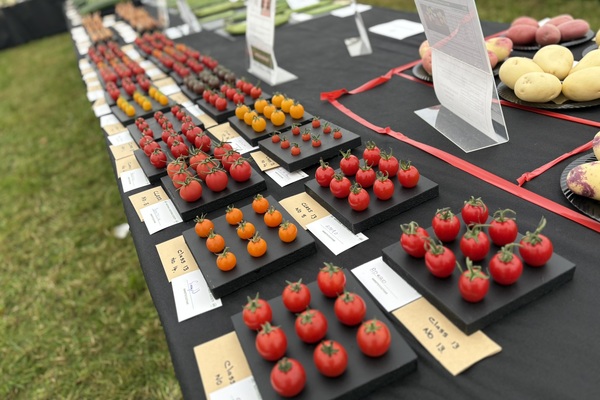This year Chairs’ Challenge Class will be for a dish of 3 Falco Turnips grown from the free seeds kindly provided by DT Brown, to every member with the winter edition of simply vegetables.
Turnips are relatively easy to grow from seed and will be ready 8-10 weeks after sowing. The fairly large seed is best sown thinly in situ half an inch (12mm) deep, into drills 8-10” apart (200-250mm). A well-cultivated, friable, deep, moisture retentive and slightly alkaline soil is best, in a sunny location, and turnips also lend themselves well to growing in raised beds or deep pots filled with good quality compost.
After germination thin to approximately 6“- 8” apart (150-200mm) for growing on to full size, and to minimise the risk of powdery mildew. A light sprinkling of a general fertiliser such as Growmore or blood, fish and bone at two ounces to a square yard can be applied a week or two before sowing.
As a member of the brassica family they can succumb to the same problems such as club-root and cabbage root fly, although both are rare. Apply lime and improve drainage to avert the former, and do not grow on ground affected by club-root in previous seasons if possible.Protect with insect mesh or fleece if root fly is a problem. Flea beetle can be another nuisance, nibbling holes in the leaf edges, and again, fleece or insect netting will help prevent attacks. Wireworm may be a problem if grown on ground that was previously grass land.
When growing for show, I find that the shoulders don’t need covering as you would with globe beet for instance (to prevent corkiness), but water regularly to ensure they don’t end up small or woody, and for a smooth skin finish without any cracking that is easy to clean. This will also prevent them bolting (going to seed) prematurely.
I took the attached photograph of 5 fairly unmatched Falco roots for this article, but the requirement for class 26 at next year’s National Championships will be for a dish of 3 only, which is even easier therefore, and makes it an ideal class for all members to enter, not just seasoned National exhibitors. With that in mind, the NVS judges guide awards the following points for turnips;
Condition 5
Uniformity 4
Size 2
Shape 2
Colour 2
It adds further that they should be ‘clean skinned, solid, shapely roots showing good uniformity in size and colour’ and should ‘present with a single tap root. Size, shape and colour should be relative to the cultivar.
In my opinion the ideal size for Falco will be about 3” (76mm) in diameter, and as they are a ‘flat’ shape in profile rather than round try and ensure they are all the same depth and shape when viewed from the side.
To paraphrase defects, they include roots that are ‘very small or very large and showing signs of ageing, going soft or spongy and displaying multiple roots, or showing evidence of pest and disease, with no cracking or other damage.’
If grown well I find they don’t take much preparation apart from a good clean with a soft sponge under running water to remove any soil, and carefully snipping off any side roots with a pair of sharp scissors to leave a single, long (hopefully!) and healthy-looking tap root intact.
Cut the foliage to leave 3” (75mm) long stalks, and transport to the show wrapped in damp tissue paper in a Tupperware box or similar for protection.
Good luck, let’s have a lot of entries to test the judges and as a way of thanking our valued sponsors D. T. Brown for their continued generosity. Anyone can win this one!







